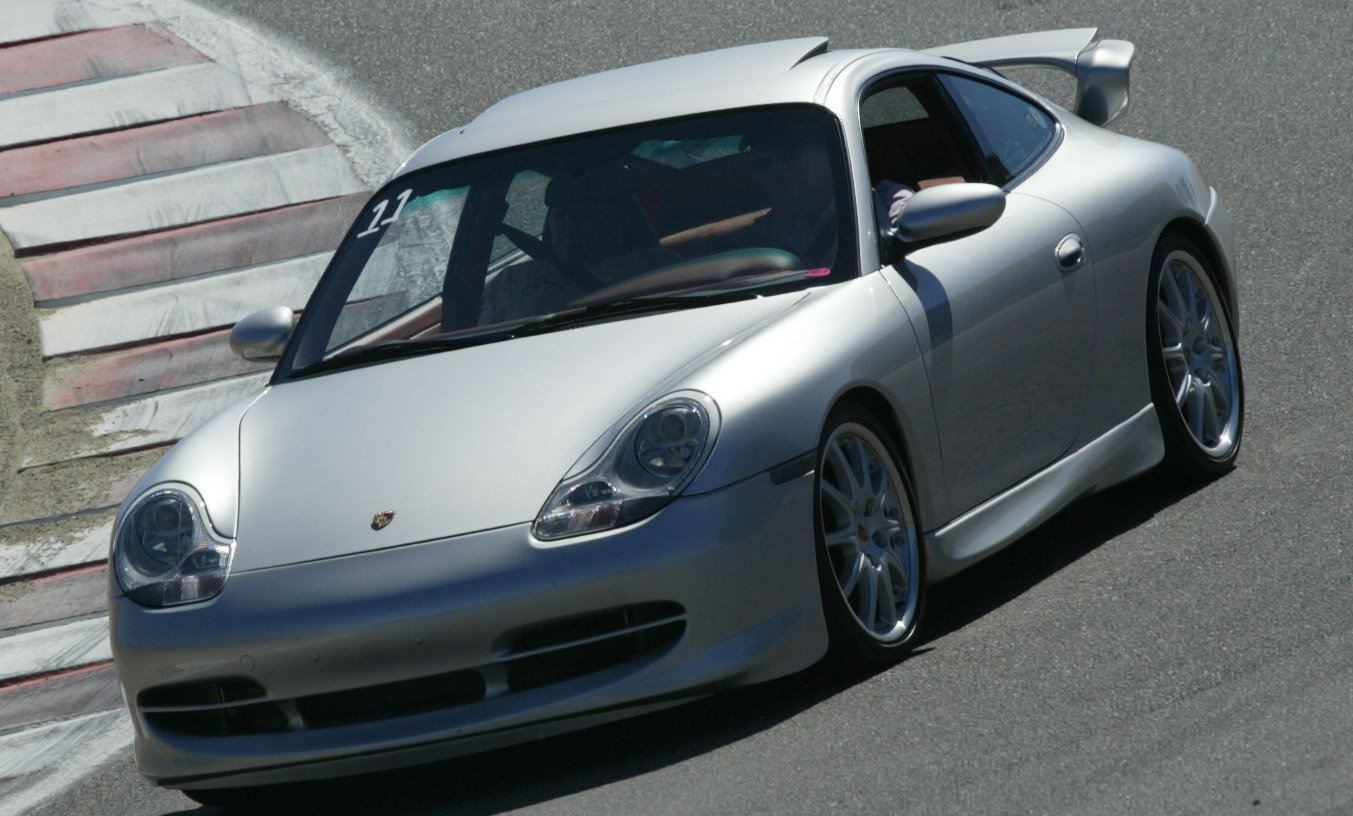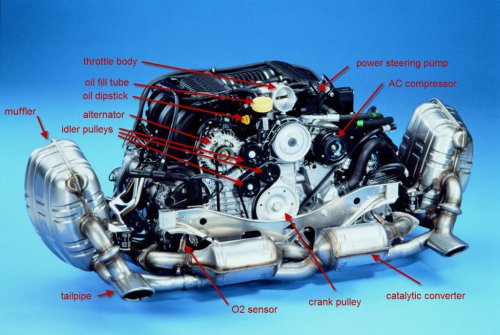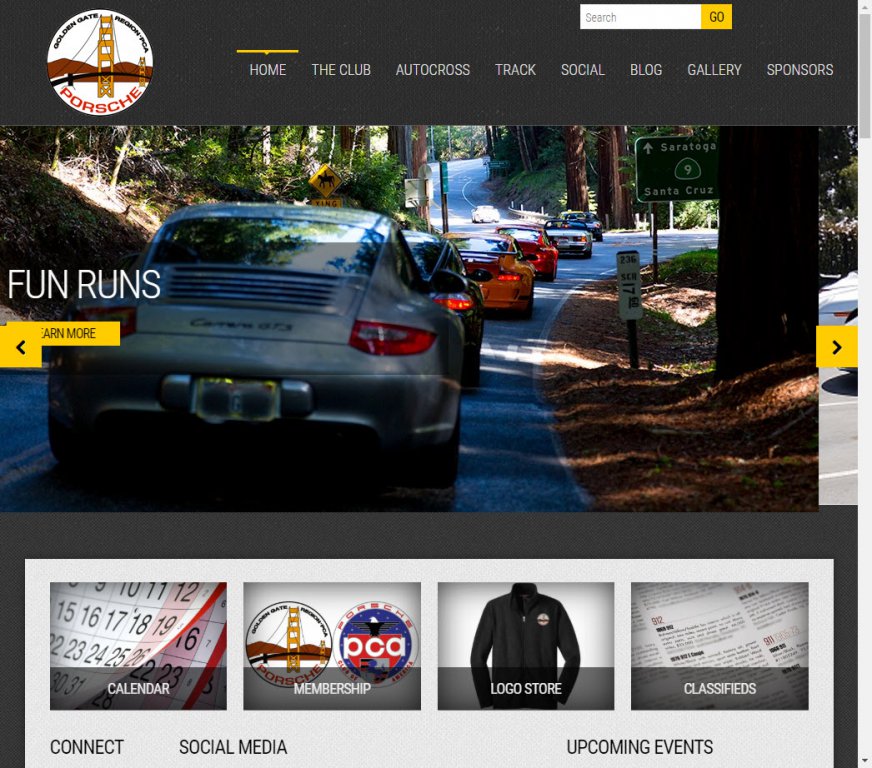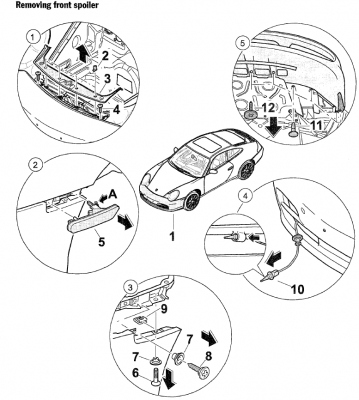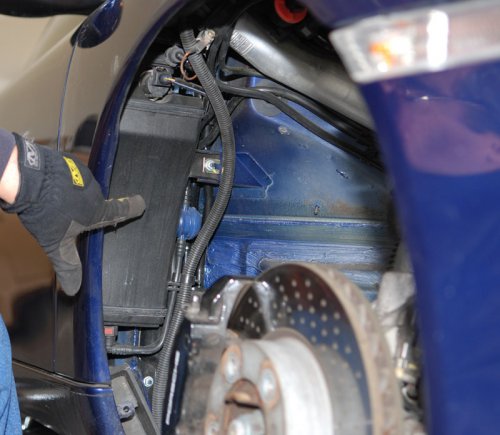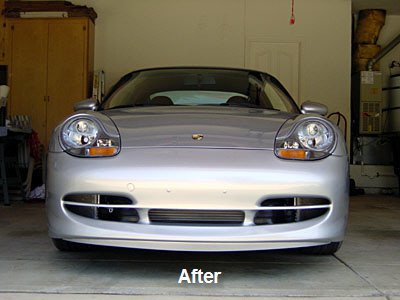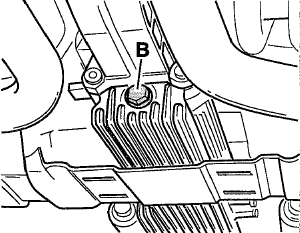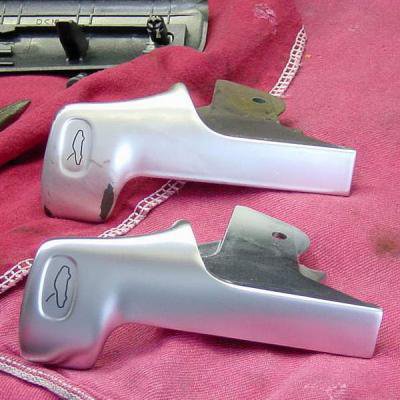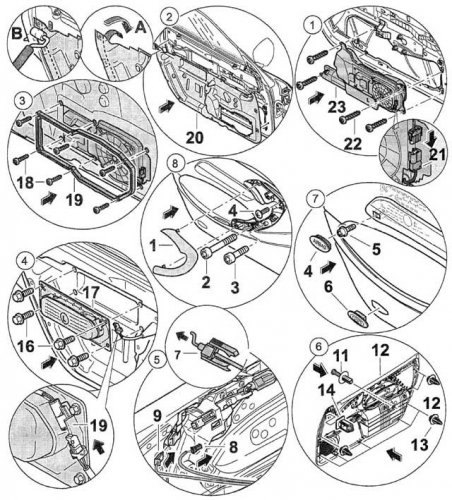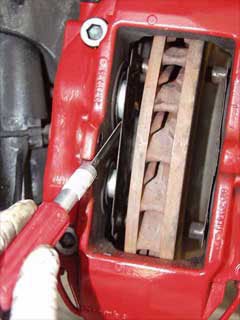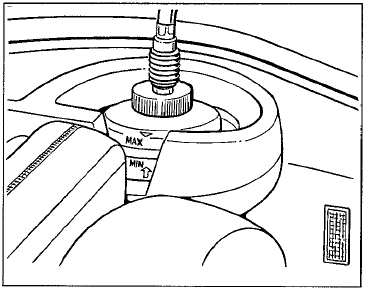Welcome to RennTech.org Community, Guest
There are many great features available to you once you register at RennTech.org
You are free to view posts here, but you must log in to reply to existing posts, or to start your own new topic. Like most online communities, there are costs involved to maintain a site like this - so we encourage our members to donate. All donations go to the costs operating and maintaining this site. We prefer that guests take part in our community and we offer a lot in return to those willing to join our corner of the Porsche world. This site is 99 percent member supported (less than 1 percent comes from advertising) - so please consider an annual donation to keep this site running.
Here are some of the features available - once you register at RennTech.org
- View Classified Ads
- DIY Tutorials
- Porsche TSB Listings (limited)
- VIN Decoder
- Special Offers
-
OBD II P-Codes - Paint Codes
- Registry
- Videos System
- View Reviews
- and get rid of this welcome message
It takes just a few minutes to register, and it's FREE
Contributing Members also get these additional benefits:
(you become a Contributing Member by donating money to the operation of this site)
- No ads - advertisements are removed
- Access the Contributors Only Forum
- Contributing Members Only Downloads
- Send attachments with PMs
- All image/file storage limits are substantially increased for all Contributing Members
- Option Codes Lookup
- VIN Option Lookups (limited)
-
Posts
37,815 -
Joined
-
Days Won
631
Content Type
Profiles
Events
Forums
External Paint Colors
Downloads
Tutorials
Links Directory
Collections
Classifieds
Store
Everything posted by Loren
-
-0001-0001.thumb.png.17f5bb25bf8ec261a17c21e6321c8492.png)
3.4 liter Engine Parts Locations
Loren posted a tutorial in Carrera (996) - Common Fixes and Repairs
Cylinder Order (engine is turned 180 degrees for Boxster/Cayman) Cylinders 1,2,3 = bank 1 Cylinders 4,5,6 = bank 2 DME Sensors 1 - Mass air flow sensor 2 - Engine temperature sensor 3 - VarioCam valve 4 - Ignition coil 5 - Tank venting valve 6 - Secondary air pump 7 - Throttle potentiometer 8 - Idle speed air control valve 9 - Injection valve 10 - Knock sensors 11 - Hall-effect sensors 12 - Engine compartment temperature sensor 13 - Oil temperature sensor 14 - Resonance flap -
Thanks to Sandy for this great DIY... (I've done this on my car and it is not very hard to do. The instructions are very detailed.) Sidemaker_mod.pdf
-
-
-
Note: Part numbers sometimes change without notice. Always double check with your supplier that you have the latest part numbers. Tools you will need: Crimping tool Soldering Iron Hot airgun (or hair dryer) Parts For MY99-MY01 use: 996.616.101.00 For MY02 and newer use: 996.616.141.00 Heat shrink tubing (fairly large) Electrical tape (optional) Note: The ballast resistor is available as a spare part and can be replaced by crimping it onto the old wires. 1. Disconnect the battery and cover the terminal or battery. 2. Unclip ballast resistor from the holder from below. 3. Cut off wires approx. 30 mm behind the old ballast resistor. 4. Slide heat-shrink tubing over the wires to the plug connections (2x) and to the fan motor (1x). 5. Shorten wires of the new ballast resistor to approx. 30 mm and strip approx. 5 mm of insulation off all wire ends. 6. Using a commercially available crimping tool, join the wires with crimp connectors. 7. After crimping, solder the crimp connectors. Slide heat-shrink tubing over the crimp connectors and then shrink the tubing with a hot airgun. 8. Carefully route the wires and, if necessary, fix in place with plastic tape.
-
See Robin's DIY at his site: 996 Water pump replacement/ Alternate PDF file (if link does not work) 996_water_pump_replacement_procedure.pdf 996_water_pump_replacement_procedure.pdf
-
Many folks have asked how to remove the front bumper to clean the radiators or replace the horns. So many that we thought it deserved it's own DIY here. We hope to add some pictures to this soon (since I keep forgetting to take them). Also see JeTexas excellent video DIY: Porsche 996 986 Front Bumper Removal Removing the Front Bumper 1. Remove the plastic rivet on the wheel liner (near the sidemarker). 2. Remove the center cover from the inside of the front trunk. Turn hexagon cap nut 2 by 90° and remove cover upwards and off 3. Undo sheetmetal screws 4 from the front end 1. 3. Remove the sidemarker light. Press in spring clip of direction indicator light (arrow) A at the sides with a screwdriver and take out the direction indicator light 5, disconnect electrical plug connection (by squeezing the metal clip to release it). 4. Remove the screws from the bottom side of the bumper. Remove the sheetmetal screws 6 and spacer sleeve 7 from the retaining strips on the left and right. 5. Remove the temperature sender probe. Press temperature sensor 10 out of the inlet grille. You can either disconnect the electrical connection and set it aside or leave it attached. 6. Remove the center screws from the bottom side of the bumper 12. Also remove the two plastic rivets 11 on each side of the bottom bumper edge. Remove bumper by lifting slightly and pulling it off to the front. Installing the Front Bumper 1. Position front bumper over the bumper mount on the vehicle. Screw in the center fastening screws on the underside 12 and push the plastic rivets 11 back into place. 2. Position the front bumper to the retaining strip (on each side) and fasten it with the sheetmetal screw 6 and spacer sleeve 7. 3. Fasten the front trunk end 1 with the sheetmetal screws 4 and the spacer sleeves 7. Important: Before tightening these down check the bumper height in relation to the front trunk. When it is properly positioned the front bumper should be even with the front trunk lid or just slightly higher than the trunk lid. Failure to do so will cause wind noise. If needed get someone to hold it in position while you tighten down the sheetmetal screws. Position the cover 3, turn hexagon cap nuts 2 by 90°. 4. Insert electrical plug connection of the sidemarker lights 5. Insert locking tab (arrow) of the direction indicator light in the front end and clip in the sheetmetal clip (to lock them in place). 5. Press temperature sensor 10 into the inlet grille.
-
-0001-0001.thumb.png.17f5bb25bf8ec261a17c21e6321c8492.png)
Removing and Installing Rear Lid Support Struts
Loren posted a tutorial in Cayenne (9PA, 9PA1) - Maintenance
Note: Part numbers sometimes change without notice. Always double check with your supplier that you have the latest part numbers. Parts Needed: 955.512.550.03 Rear Lid Dampers (2 required) Removal Notes: - To remove the pneumatic springs, they must be in idle state: rear lid open. - The rear lid must be secured against accidental closure after removing the pneumatic springs. - Pneumatic springs must not be opened using force extreme internal pressure. Note: Some of the interior lining pieces can be fragile so handle them with care. 1. Open rear window and rear lid. 2. Remove rear roof lining: - Unclip interior light on the roof lining. - Pull off plug. - Unclip roof lining at marked positions. To do so, lift the lining slightly at the rear and lever the clip connection out using a screwdriver. 3. Remove the D−pillar trim: Note: When unclipping the D−pillar trim using a tool, make sure not to damage the electrical wires lying behind it and the head airbag. - Open cover for luggage compartment net partition. - Unscrew fastening screw. - Unclip D−pillar trim (5 locations in the middle) from the interior D−pillar. To do so, raise trim slightly and lever out the fastening clips using a screwdriver. - Unclip D−pillar trim where it joins rear side trim. - Unclip D−pillar trim from interior D−pillar at the bottom. To do so, raise trim slightly and lever out the fastening clips using a screwdriver. - Only in vehicles with BOSE sound system: Pull off plug from the loudspeaker. - Remove D−pillar trim. 4. Remove rear grab handles at left and right: - Unfold grab handle, Unclip cover, Unscrew fastening screws. - Remove grab handle. 5. Unscrew the fastening screws . 6. Unclip and remove the deformation element. 7. Cut open the bonded joint on the cover with a knife and remove the cover. 8. Remove any sealant residue on the cover and on the body. 9. Secure rear lid so that it cannot fall shut accidentally. It is very heavy and one strut will not hold it up. 10. Loosen the retaining clips on the pneumatic spring for the rear lid at the ball sockets using a screwdriver and remove the clips. 11. Pull the pneumatic spring for the rear lid from the ball heads and remove. Installation 1. Place the retaining clips on the pneumatic spring for the rear lid at the ball sockets and press into position. 2. Press the pneumatic spring for the rear lid on to the ball heads until the retaining clips engage perceptibly. 3. Apply Klebt und Dichtet sealant to the cover and stick on the cover. Note: After sticking on the cover, allow the sealant to dry for about 60 minutes. 4. Position and clip in the deformation element . 5. Insert the fastening screws and tighten to the 2 ftlbs (3 Nm). 6. Install rear grab handles at left and right (reverse of above). 7. Install D−pillar trim (reverse of above). 8. Install rear roof lining (reverse of above). 9. Remove the rear lid bracing device and carefully test the lid. Note: Be sure to see the DIY Video that Contributing Member rizzo put together - here -
-0001-0001.thumb.png.17f5bb25bf8ec261a17c21e6321c8492.png)
Replacing the Gas/Fuel Door Actuator
Loren posted a tutorial in Carrera (996) - Common Fixes and Repairs
Note: Part numbers sometimes change without notice. Always double check with your supplier that you have the latest part numbers. (Special thanks to Chuck Jones for being the guinea pig and for taking the photos.) Parts you will need: 997.624.113.00 Actuator Tools you will need: Very short Torx T20 driver and right angle ratchet or tool to use the short T20 in a very confined space Regular screwdriver, phillips screw driver, and 10 mm wrench to remove th wheel well liner 1. Jack the car so that right front wheel is off the ground and secure it with a jack stand. Remove the right front wheel. 2. Remove the wheel well liner by removing the the plastics rivets (pry them out with a regular screwdriver). As well remove the 10 mm nuts on each side of the axle. Now remove the phillips screws that fasten the wheel well liner under the front bumper and remove the wheel well liner (and set aside). 3. Locate the EVAP canister and remove the electrical connection at the top of the canister. Now remove the 10 mm nut that holds the canister in place. Remove gas the vapor lines - one at the top and one at the bottom (again by squeezing the connectors). Remove the EVAP canister by pulling gently back and forth until it releases from the rubber gromments 4. Look back up under the fender (now that the canister is out of the way) and locate the broken actuator. Now using the stubby Torx T-20 loose (but do not remove) the two T-20 screws. The actuator itself is a bit tough to get to and you will need a really short T-20 Torx head to loosen the two screws. I say loosen because that is all you need to do to remove the part - it sits in two "U" shaped slots. Remove the electrical connector (by squeezing the tab). Here is a pic of the new part - as you see the Torx screws are already in place so that is all you have to do to replace it. 5. Put the new part in place making sure you feed the emergency pull line through the fender to its location in the door jam. There is room to slide it through the side so you don't need to try and thread it through the hole. Fasten the two Torx screws and reconnect the electrical connector. Chuck's car had the guide rose guide piece missing (so he needed to order one) Here is a pic of his car (without guide rose) and my car (with guide rose). Ref. P/N 997.624.505.00 We also noticed that on his car the plastic catch for the lock was missing (so he needed to order that too). Here is a pic of his car (without cap) and my car (with cap). Ref. P/N 996.201.243.00 6. Reinstall the EVAP canister by pushing it into place on the rubber gromments. Then reattach the vapor lines (they should snap back into place) and the electrical connection. Finally put the 10 mm nut back in place and tighten down. 7. Reinstall the wheel well liner (reverse of removal). 8. Mount the tire, lower the car and re-torque the wheel bolts. Done. -
-0001-0001.thumb.png.17f5bb25bf8ec261a17c21e6321c8492.png)
Sirius Installation Instructions - Porsche 997 C2S
Loren posted a tutorial in Carrera (997-1) - Mods
The following is provided by one of our Contributing Members. Sirius Installation Instructions - Porsche 997 C2S For Car With BOSE But No NAV Or CD Changer DISCLAIMER: PROCEED AT YOUR OWN RISK- YOU WILL PROBABLY VOID YOUR WARRANTY AND YOU MAY RISK CAUSING DAMAGE TO YOUR VEHICLE FOR WHICH YOU WILL BE SOLELY RESPONSIBLE. BACKGROUND: This installation was performed on a C2S model with the latest PCM software, the Bose audio option but no CD changer or NAV option installed. These instructions are SPECIFIC to a car without NAV or the CD changer as there is no fiber optic cable to pick up a connection near the position you will mount the SIRIUS unit. You will therefore have to pick up the fiber optics closer to the amplifier in the lower portion of the luggage compartment adjacent to the luggage lamp. It is a slightly more difficult installation than one for a vehicle with an existing NAV or CD changer. Vehicles with NAV systems (and/or CD changers) will have a fiber optic cable closer to the SIRIUS unit that can be disconnected and run through the cable supplied with the kit. In these cases, there should be no no need to replace the fiber optic cable from the amplifier and as pictured elsewhere in the forum should be a simpler installation. In contrast with previously described installation instructions, it was NOT necessary to remove the cowl and windshield wipers or disconnect hoses and wires fed through to the cowl. Order Sirius Cayenne kit (specify that you want Sirius for the CD changer option whether you have a CD Changer or not) - the cable is required for this installation. No cutting, soldering, or wire splicing was necessary for this installation. Everything is essentially plug and play but the difficulty lies in removing plastic panels, getting access to the various components, and identifying the correct cables (and plugs) necessary for the installation. I would NOT recommend this as a DIY project for anyone who does not have a good amount of experience with electrical work, automotive/audio electronics, or sophisticated computer equipment installation. There are three major cable runs. 1) Power from car to SIRIUS unit, 2) bypass of the fiber optic cable that travels from the car to the audio amplifier through SIRIUS unit, and 3) antenna cable from SIRIUS unit to antenna mounted under cowl. There are two items that need to be mounted: the SIRIUS unit itself, and the multi-purpose antenna (plugs for SAT and GPS). NOTES: I found it necessary to dismantle the fiber optic / power supply cable bundle by removing the black spiral adhesive tape and white adhesive labels separating the orange fiber optic cables pair from the power supply cable. I also separated an antenna wire pair from another bundle with other lines and tubing specific to the Cayenne and unneeded for the 911 install. There was one orange fiber optic and one antenna cable left over at the end of the installation in addition to a myriad of other Cayenne specific small parts. The Cayenne satellite install TSB is worth reviewing but is largely useless for this installation. Note that all fiber optic plugs have black plastic protective covers which must be removed before they are connected. Perform all installation procedures with the key turned off and removed from the ignition. Porsche seems to recommend disconnection of the battery for electrical work on their vehicle. STEP BY STEP: 1. Remove ALL accessible plastic access covers from interior of luggage compartment with the exception of the headlight/turn signal access panels. You will need to access to the area where the CD changer and NAV are usually mounted, the area under the cowl above the cabin air filter, and the amplifier component stored behind the flat tire tools. I removed the largest plastic piece (requires removal of approximately 4-6 phillips screws) and disconnection of the luggage compartment lamp effected by pulling a small plug from a receptacle just behind the lamp. Note its orientation when you disconnect it so you can reconnect it properly at the end of the installation. Other panel and carpet fasteners are removed as needed. The cowl directly under the windshield wipers may be left in place (it can not be removed without the disconnection of windshield washer tubing and removal of the wiper themselves). 2. Remove the molded carpet pieces in the CD changer / NAV area (passenger side of the luggage compartment) and place the Sirius unit towars the center of the luggage compartment with cable receptacles facing forward. I secured the unit at the end of the installation with two sheet metal screws through the carpet into the metal frame designed to hold audio components. (This is shown in photographs in other posts). Plastic ties would work nicely here too. 3. Locate the spare (and hidden) BLACK/WHITE/RED/BROWN power supply plug tucked beneath the carpet on far left side of compartment which you will need to bring power to the unit. Plug one end of the supplied power cable into this plug and the other end into the Sirius unit. Note that this may not be possible (plug won't physically reach power supply) unless the power cable has been separated from the orange fiber optic cable in the fiber optic bundle and re-directed in the opposite direction. There will be a remaining unused plug on this cable (on the power supply end) which can be used to power a CD Changer or NAV should you add it later. 4. Locate the ORANGE fiber optic plug which plugs into the amplifier (component with ventilation fins behind the tire repair tools) behind its wiring harness. This plug is hidden from view and is NOT clearly visible. It must be traced from a bundle of the car's wires just to the right of the amplifier unit near the luggage compartment lamp on the driver's side of the vehicle. 5. Identify the ORANGE fiber optic cable supplied in the kit with MALE -and- FEMALE plugs that branch off approximately 4 to 5 inches from each other forming a 'Y'. Work with this end of the cable for this step. 6. Locate the ORANGE fiber optic cable (with a black plug) connected to the amplifier just behind the wiring harness (and out of sight) and disconnect. Plug this male component into the FEMALE plug on the end of the MALE/FEMALE cable end as described above. Connect the MALE plug into the amplifier behind the wiring harness. Be very careful not to damage, crush, or over-bend the fiber optic cable which runs as part of a bundle from the car as failing to do so will necessitate a very expensive not covered by warranty service visit. Remember that fiber optic cables have a bend radius that if exceed DESTROYS the cable and will also make future troubleshooting difficult. Plug the opposite end of the cable (also a MALE) into the Sirius unit after feeding and routing the cable under the carpet. 7. Plug the antennae cable (brown/green) into the receptacles on the Sirius unit. Locate the purple dual antenna plug on the opposite end of this first antenna cable and connect it to the dual purple plug of the second antenna cable. When the two antenna cables are connected (via the purple plugs) there will be 15-20' of antenna cable left to coil and tie off. Feed the WHITE and PURPLE 90 degree (right-angle) plugs through an available rubber grommet securing it as needed with ties along the way and run it to a space just over the air filter. At this point, you connect the Sirius antenna with the black side facing up. It should be especially snug in the position under the cowl and over the air filter and can be further secured with double sided tape as needed. Note that it may be possible to better secure the antenna (without removing the cowl) by removing the air filter and its enclosure. There should be a receptacle on the underside of the cowl for a phillips screw to secure the SAT/GPS antenna. A flat ratchet wrench type screwdriver with an offset should allow you to drive the screw in the limited space available but I have not experimented with this approach yet. 8. Tie up loose cables with supplied plastic ties. Run wires where possible under carpet and be sure to take care to protect the orange fiber optic cables.. Record the SIRIUS I.D. # in the small print (not the CRIN #) from the label on the unit which you will need for activation. Replace plastic panels. Make sure the car is located outside with a clear view of the sky in all directions. Turn ignition to ACC position. If for some reason, PCM doesn't power up or appear to be functioning normally, you have made a mistake and should go back and check your work. 9. Press Audio button and Press FM/AM band select button and PCM should recognize the satellite unit and show the message "acquiring signal". The default channel is 147 or 148 and you need to hear the programming before proceeding or you must go back and check your connections. Contact Sirius with the unit's ID # to receive 3 free months and activate the unit. Total working time was 2 hours and 30 minutes exclusive of activation with almost 50% of the time spent identifying unfamiliar parts. I believe I could do a second installation in 90 minutes or less. -
-
-
-
Removing the engine drive belt 1. Remove the complete air cleaner assembly (1). - Undo hexagon head bolt M6 x 34. - Undo the hose clamp on the throttle body. - Remove the connector for the mass air flow sensor (MAF) and remove air cleaner assembly. 2. Loosen servo pump wheel (2). - Mark belt travel direction with a colored pen (if you are going to re-use the belt). - Undo the three hexagon head bolts on the servo pump by approx. one half turn. 3. Relieve drive belt (3). - To do this, turn the tensioning roller clockwise and simultaneously remove the belt from the drive pulleys. 4. Remove servo pump wheel (4). Note - Only remove the servo pump wheel when the drive belt tension is completely relieved! - Remove servo pump wheel with drive belt to the rear. - Remove the belt from all drive wheels and lift up to remove. ---------------------------------------------------------------------------------------------------------------------------------- Installation of the engine drive belt 1. Fit drive belt (1). - Fit the belt onto the drive wheels. 2. Position servo pump wheel (2). - Put on the servo pump wheel together with the drive belt. - Slightly tighten the three fastening screws on the servo pump wheel. 3. Tension drive belt (3). Note - It is absolutely necessary to check that the drive belt is correctly seated on all belt pulleys! - To tension the drive belt, turn the tensioning roller 7 in clockwise direction and simultaneously fit the drive belt on the deflection roller 8. - Then slowly relieve. To do this, turn the tensioning roller slowly counter−clockwise (anti-clockwise). 4. Tighten fastening screws on servo pump (4). - Tighten the fastening screws of the servo pump drive wheel. Tightening torque: 17 ftlb. (23 Nm) 5. Install air cleaner assembly (5). - Attach connector onto mass air flow sensor (MAF). - Tighten the hose clamp on the throttle body. - Tighten the M6 x 34 hexagon−head bolt to 7.5 ftlb. (10 Nm)
-
-
Note: Part numbers sometimes change without notice. Always double check with your supplier that you have the latest part numbers. Parts you will need: 1 ea 996 110 131 71 Air Filter or equal (BMC or K&N Filter) Tools you will need: 10 mm socket or wrench Regular screwdriver Phillips screwdriver Remove the complete air cleaner assembly. Remove the hexagon-head bolt M6 x 34. Remove the hose clamp on the throttle body. Pull off plug from hot film mass air flow sensor and completely remove air cleaner assembly. (10 mm wrench) Remove the captive fastening screws (9 ea.), remove air cleaner. Clean air cleaner housing and air cleaner cover. Insert new air filter insert. Reinstall in reverse order.
-
Note: Part numbers sometimes change without notice. Always double check with your supplier that you have the latest part numbers. Parts you will need: 1 ea 996 107 225 52 (or 996 107 225 53) Oil Filter (with large O-ring) 1 ea 999 707 465 40 Small O-ring 1 ea 900 123 010 20 Copper Sealing Ring - Oil Tank 1 ea 900 123 118 30 Aluminum Sealing Ring - Engine 9 ea 996 106 665 55 Mobil 1 0W-40 or equal (approx. 8.5 liters (MY04 GT3 9.0 liters)) Approved Oils as of June 2004 The list is now very long (for worldwide coverage). Here is a short list of popular oils (US/Canada): Castrol Syntec 5W-50 5W-50 ncp G Castrol Syntec 5W-40 5W-40 ncp GL Mobil 1 0W-40 ncp GL (factory fill) Mobil 1 5W-40 ncp GL Mobil 1 5W-50 ncp GL Mobil 1 Tri-Synthetic Formula 0W-40 ncp GL Texaco Havoline Synthetic 5W-40 ncp GL Note: ncp oils are synthetic (or "non-conventional processing") oils. GL oils have good light running properties because of their light low-temperature viscosity as well as a high level of temperature stability. G rated oils can be used as non-seasonal oil, but do not have the same light running properties as "GL" oils. Tools you will need: Tire ramps or jack 15 mm socket for crankcase drain 27 mm wrench and 19 mm socket for oil tank drain Oil filter wrench (p/n 000 721 920 40) (tool 9204 about $7 to $22 at your dealer) image 9 plus quart oil catch pan Torque wrench (optional) Oil should be changed when the engine has reached normal operating temperature. CAUTION - oil will be hot, take adequate precautions to avoid being burned. Always dispose of the waste oil in accordance with local legal requirements. Use ramps or jack up the vehicle at the points provided. Remove the oil drain screw and collect the engine oil in a disposal container (at least 9 quarts). Wait about 20 minutes for the old oil to drain. Then clean the oil drain screw and screw it back in with a new aluminium sealing ring. Tightening torque is 52 ft-lb. Remove the oil tank drain screw (19 mm) while holding the nut above it with another (27 mm) wrench (this avoids twisting the tank itself). Collect the engine oil in a disposal container. Wait about 20 minutes for the old oil to drain. Then clean the oil tank drain screw and screw it back in with a new sealing ring. Tightening torque is 44 ft-lb. Remove the oil filter using the oil filter wrench. Pull off and dispose of the old oil filter element. Clean the oil filter housing thoroughly inside and outside and replace the two O-rings. The new O-rings will go on easier if a light amount of oil is on them. Do not put them on with a screwdriver or other sharp object as a sharp object will damage the O-ring. Remove the remaining quantity of oil from the oil filter housing by suction. Install the new filter element. Lightly apply oil to the housing threads. Install oil filter housing and tighten to 19 ft-lb. Fill with engine oil. The oil change quantity is approx. 8.5 liters (MY04 GT3 9.0 liters) after a draining time of approx. 20 minutes.
-
Note: Part numbers sometimes change without notice. Always double check with your supplier that you have the latest part numbers. Parts you will need: 1 ea 996 107 225 52 (or 996 107 225 53) Oil Filter (with large O-ring) 1 ea 999 707 465 40 Small O-ring 1 ea 900 123 010 20 Copper Sealing Ring - Oil Tank 1 ea 900 123 118 30 Aluminum Sealing Ring - Engine 9 ea 996 106 665 55 Mobil 1 0W-40 or equal (approx. 8.5 liters (MY04 GT3 9.0 liters)) Approved Oils as of June 2004 The list is now very long (for worldwide coverage). Here is a short list of popular oils (US/Canada): Castrol Syntec 5W-50 5W-50 ncp G Castrol Syntec 5W-40 5W-40 ncp GL Mobil 1 0W-40 ncp GL (factory fill) Mobil 1 5W-40 ncp GL Mobil 1 5W-50 ncp GL Mobil 1 Tri-Synthetic Formula 0W-40 ncp GL Texaco Havoline Synthetic 5W-40 ncp GL Note: ncp oils are synthetic (or "non-conventional processing") oils. GL oils have good light running properties because of their light low-temperature viscosity as well as a high level of temperature stability. G rated oils can be used as non-seasonal oil, but do not have the same light running properties as "GL" oils. Tools you will need: Tire ramps or jack 15 mm socket for crankcase drain 27 mm wrench and 19 mm socket for oil tank drain Oil filter wrench (p/n 000 721 920 40) (tool 9204 about $7 to $22 at your dealer) image 9 plus quart oil catch pan Torque wrench (optional) Oil should be changed when the engine has reached normal operating temperature. CAUTION - oil will be hot, take adequate precautions to avoid being burned. Always dispose of the waste oil in accordance with local legal requirements. Use ramps or jack up the vehicle at the points provided. Remove the oil drain screw and collect the engine oil in a disposal container (at least 9 quarts). Wait about 20 minutes for the old oil to drain. Then clean the oil drain screw and screw it back in with a new aluminium sealing ring. Tightening torque is 52 ft-lb. Remove the oil tank drain screw (19 mm) while holding the nut above it with another (27 mm) wrench (this avoids twisting the tank itself). Collect the engine oil in a disposal container. Wait about 20 minutes for the old oil to drain. Then clean the oil tank drain screw and screw it back in with a new sealing ring. Tightening torque is 44 ft-lb. Remove the oil filter using the oil filter wrench. Pull off and dispose of the old oil filter element. Clean the oil filter housing thoroughly inside and outside and replace the two O-rings. The new O-rings will go on easier if a light amount of oil is on them. Do not put them on with a screwdriver or other sharp object as a sharp object will damage the O-ring. Remove the remaining quantity of oil from the oil filter housing by suction. Install the new filter element. Lightly apply oil to the housing threads. Install oil filter housing and tighten to 19 ft-lb. Fill with engine oil. The oil change quantity is approx. 8.5 liters (MY04 GT3 9.0 liters) after a draining time of approx. 20 minutes.
-
Note: Part numbers sometimes change without notice. Always double check with your supplier that you have the latest part numbers. A third (center) radiator is standard on the Porsche GT3, Boxster S and all Carrera's or Boxster's with Tiptronic transmission. As well, the third radiator is now standard on all X51 Carrera Power Kit (engine power upgrade). Although the Tiptronic radiators are plumbed differently it is obvious that Porsche did this to increase the cooling capacity of these cars. Having great concern for my engine, specifically it's cooling in the hot California weather and... knowing that what Porsche does for it's competition cars is usually a good (yet sometimes expensive) idea for our street (sometimes tracked) cars. I decided to add the GT3 radiator to my 1999 Carrera Coupe (w/factory aerokit). The goal being that extra amount of protection that the additional cooling capacity adds. Initial tests show that the highest temperatures (after hard driving) have gone down 10-20°F (7-12°C) after this installation. Here is my installation procedure: It took me 4-5 hours taking pictures and cleaning. I would expect this can be done in 3-4 hours (or less). Parts you will need GT3/996 Radiator Kit (available as a kit from Carnewal.com) consisting of: 1 ea 996 106 037 51 Radiator 1 ea 996 106 666 52 Radiator Hose (right side return line) 1 ea 996 106 665 55 Radiator Hose (left side intake line) 1 ea 996 575 141 02 Air Duct (center) (for MY02 and newer 996 575 141 04) 1 ea 996 504 485 02 Retaining Frame (bottom) 1 ea 996 504 487 02 Retaining Frame (top) 4 ea 930 113 430 00 Rubber Grommets (for retaining frame) 2 ea 999 507 550 02 Speed Nut M6 (for retaining frame) 2 ea 900 378 036 09 Bolts M6 (for retaining frame) 2 ea 999 512 552 00 Screw Type Hose Clamps (now included in kit) 4 ea 999 591 869 02 Speed Nut M8 (for mounting bracket on the car) 4 ea 900 378 074 09 Bolts w/washers M8 (final mounting bolts for the assembly) Other items you will need: 4 ea 999 512 551 00 Screw Type Hose Clamps (large, do not reuse the spring clamps) 2 liters 000 043 203 78 Porsche HMZ Coolant Tools you will need Jack Jack stands 19 mm socket for wheel bolts Key for security wheel bolt Metric sockets - 10 mm, 13 mm Regular screwdriver Phillips screwdriver Torx bit- T25 Torque wrench (97 ft-lb) to tighten wheel bolts Utility Knife Cooling line mounting paths (what it will look like). The parts kit from Carnewal.com. Two views (second one courtesy of Scott Mandell). Pre-assemble the Radiator. Using the numbers in the illustration you can pre-assemble some of the radiator parts using the rubber grommets (4) and the M6 Speed Nuts (6) and M6 Bolts (5). Note the radiator outlet positions and the retaining frame top and bottom (see parts list for p/n). The radiator hose connections face the car and are on the top. The top retaining bracket (2) has tabs with small hooks. The tab hooks point towards the car and the tabs themselves angle away from the car. The bottom bracket (3) has tabs that face the car. When mounted the radiator will NOT be vertical it will be at a slight angle up. Raise the car and remove the wheels. Start by jacking the car up and placing jack stands under the front wheel jack mounts. This really puts the car at a more comfortable height to work on. Next remove the front wheels. Remove the side markers. Move the wheel well liners back. Remove from the wheel well the 3 plastic rivets and the 10 mm nut. Pull the wheel well liner back as shown (I used twine). Remove the front bumper cover. There are two screws on each side at the side marker area. One is at the forward part where the side marker assembly attaches, the other is behind the side marker. Remove the screws and rivets under the nose (2 rivets and 7-9 screws). Remove the plastic cover over the front trunk latch. This is held in place by four plastic fasteners. You just rotate these 90 degrees to remove them. Carefully pull the cover off over the latch handle. Finally remove the 2 screws (now visible). Detach the air temperature sensor cable. Lift the bumper cover off and place on a padded surface to avoid scratches. Remove the air scoops. There are 5 torx screws on the scoops to remove them. On the right side you will need to feed the rubber grommet (for the temperature sensor) through the scoop to remove it. Clean the radiators. Detach the air conditioning condensers (2 torx screws) and use a soft brush and vacuum to clean the radiators and air conditioner condensers well. Loosen the radiator assembly on each side. Remove the two bolts (13 mm) under the support bracket. Then remove the (13 mm) nut that holds the bracket (inside the wheel well). This will now allow the whole assembly to move about 6 inches down and to the side allowing enough room to change the hoses. Replace the lower hose on right (passenger side) side. Using pliers slide the hose spring clamps back on the hose but don't remove the hose yet. Place a clean container (about 2 quarts should be enough) to catch the coolant when you carefully remove the hose at the radiator end first. Coolant. This about the quantity of coolant you should expect when you remove the lower hose. I would guess slightly more than one radiator capacity. Right side (passenger side) Hoses. Old hose on left new hose on right. Place the clamps on the hoses and re-attach. Before tightening down the hose clamps rotate the hose so that the small hose is correctly positioned at to the top center of the car (for the new radiator). Replace the upper hose on left (drivers side) side. Place the clamps on the hoses and re-attach. Before tightening down the hose clamps rotate the hose so that the small hose is correctly positioned at to the top center of the car (for the new radiator). This one is a little trickier but you should see the hose path as it sits up and under the fender. Left side (drivers side) Hoses. Old hose on left new hose on right. Attach the center radiator to the car. Using the M8 speed nuts place them on the brackets on the car and attach the radiator (assembly) loosely using just the top 2 bolts. Attach the small hose to the center radiator. To easily attach the left hose remove the bolt from the left side mounting (now only supported on the right) and attach the hose and tighten the clamp. Do the reverse on the other side (place bolt back in left side and remove right bolt). Finally tighten down all 4 M8 bolts to hold the radiator firmly in place. Re-attach the radiators. Carefully re-position the radiators and replace the 2 bolts and nut that holds the assembly in place. Take care to line it up as it was previously. Reattach air conditioner condensers and tighten the 2 torx screws that hold them in place. Test for leaks. Start the engine and run for at least 5 minutes while checking for leaks. If everything is tight and leak free proceed with the rest of the re-assembly. Attach center air duct. Carefully position the air duct such that the 6 protrusions snap into the places on the radiator frame. Reattach the side air scoops (5 each torx screws). Remove the center plug in the bumper cover. This may sound easier than it is. Seems Porsche uses a black silicone type sealant on this. I found the best way was to use (carefully) a utility knife to cut away as much of the sealant as possible and then carefully pull until I got a corner up and worked my way around the edges. Note: For standard (non-aerokit) front bumpers; cut the inside gasket along the line. Remove the center plug as shown in these images (courtesy of Scott Mandell) Or, you could replace the rubber bumper insert with: 996 505 553 05 01C Air Inlet for Tiptronic (or for MY02 and newer 996 505 561 02 01C). This replaces the original insert and installs across width of stock 996 bumper. Re-attach the bumper cover. Basically, the reverse of removal. Re-attach wheel well covers. Ditto, basically the reverse of removal. Re-attach the side marker lights, wheels, lower car. Again, the reverse of removal. Add coolant, check for leaks (again), and bleed system... Add a mixture of antifreeze and water using the HMZ coolant. Antifreeze in coolant: 50% gives protection down to -31°F (-35°C) 60% gives protection down to -58°F (-50°C). Be careful not to overfill (it will get pushed out on the floor). Lift the bleed valve. Start the engine and allow it to get to full operating temperature (I also ran the air conditioning to force circulation). The coolant warning light will likely start to flash. Shut the engine off and WAIT until the engine and coolant has cooled enough to remove the coolant tank cap. Then add coolant to the tank and repeat the process. You made need to do this 2-3 times. When the coolant level fails to fall then the system is bled and you can close the bleeder valve. Enjoy your "cool" car. Just to be safe it might make sense to check the coolant level a couple of times in the next one or two days. I found under heavy (track) driving in hot weather my coolant temps run 10 to 20°F (7 to 12°C) cooler now.
-
Note: Part numbers sometimes change without notice. Always double check with your supplier that you have the latest part numbers. Parts you will need: 1.5 liters Shell Transaxle (75W-90) or Mobil Mobilube PTX (75W-90) Approved Front Axle Oils 000 043 204 20 Mobil (Mobilube PTX) - 20 liter container 000 043 204 19 Shell (Transaxle) - 20 liter container 999 917 546 00 Shell (Transaxle) - 1 liter container Tools you will need: Tire ramps or jack Wrench for the fill plug Wrench for the drain plug 2 quart oil catch pan Torque wrench (optional) Draining Front Wheel Drive Oil Front Wheel Drive oil should be changed when the engine/transmission has reached normal operating temperature. CAUTION - oil will be hot, take adequate precautions to avoid being burned. Use ramps or jack up the vehicle at the points provided. Remove underside panels to access the front wheel drive. Place oil collection pan under the front wheel drive (at least 4 quarts). Always dispose of the waste oil in accordance with local legal requirements. Unscrew oil filler screw (A). Unscrew oil drain screw (B) and drain the front wheel drive oil. Wait about 20 minutes for all the old oil to drain. Fill Front Wheel Drive Oil Clean oil drain and oil filler screw. Screw in oil drain screw. Tightening torque: 21 ft-lb. (28 Nm) Fill with gear oil up to the bottom edge of the oil filler opening. Screw in oil filler screw. Tightening torque: 21 ft-lb.(28 Nm) Install underside panels. Front Wheel Drive Model/Capacity (approx.) 911 Carrera 4 - 1.5 liters Turbo - 1.2 liters
-
-0001-0001.thumb.png.17f5bb25bf8ec261a17c21e6321c8492.png)
Hood/Trunk Latch Release Removal/Install
Loren posted a tutorial in Carrera (996) - Common Fixes and Repairs
Note: Part numbers sometimes change without notice. Always double check with your supplier that you have the latest part numbers. (photos courtesy of Steven Gliksman) Tools you will need: Torx T20 driver Small narrow regular screwdriver Plastic Spatula (or butter knife) 4 mm and 6 mm hex allen socket or 4 mm and 5 mm allen wrench Disassembling the release for front/rear lids Undo hexagon socket head bolts - Remove the plastic plugs and loosen (but do not remove) the M6 x 25 hexagon socket head bolts from the sill (approx. 4 to 5 turns). Remove the sill cover - Lift sill cover upwards and out of the bottom support with a plastic spatula (or butter knife) and carefully pull it out. Release the bowden cables - Undo the M4 x 14 hex socket head bolt of the bowden cable in the actuating lever. Press the bowden cable sleeve out of the guide on the sill cover. Release the actuating levers - Press the retainer (SLB 6) out of the (6 x 22 x 19) pin. Remove the pin from the actuating lever and from the sill cover. Disengage the spring from the sill cover and pull the actuating lever up and out of the sill cover. Release the actuating element - Remove the Torx screws from the actuating element and pull it slightly out the support to the rear. Disconnect the electrical connection. Remove. ------------------------------------------------------------------------------------------------------------------------------ Assembling the release for front/rear lids Fit the actuating element - Insert the actuating element for the lid release into the support from behind. Then fasten it with the T20 x 15 Torx screws. Connect the electrical plug connection. Fit the actuating levers - Position actuating lever in the sill cover, press in the (6 x 22 x 19) pin and secure it with the retainer (SLB 6). Engage the tension spring (0.8 x 5.2 x 30) in the sill cover and engage the actuating lever. Fit the bowden cables - Position the bowden cable in the actuating lever and fasten it with the M4 x 14 hex head bolt. Press the bowden cable sleeve into the guide of the sill cover. Check the plastic clips - Check the plastic clips in the sill cover and replace them if damaged (999 703 443 40 01C Plug - satin black). Put in the hex head bolts - The M6 x 25 hex head bolts in the support MUST NOT be screwed in by more than 3 to 4 turns. Fit the sill cover - Position the sill cover on the support and push it into the support. Tighten the hex head bolts - Tighten the M6 x 25 hex head bolts in the support through the holes in the sill Cover. Press in the (8.0 x 11 x 7.2) plugs. -
-0001-0001.thumb.png.17f5bb25bf8ec261a17c21e6321c8492.png)
Door Panel Removal / Install Instructions
Loren posted a tutorial in Carrera (996) - Common Fixes and Repairs
Note: Part numbers sometimes change without notice. Always double check with your supplier that you have the latest part numbers. Tools you will need: 10 mm socket or wrench Small narrow regular screwdriver Phillips screwdriver 4 mm hex allen socket or 4 mm allen wrench Door Panel Removal Note: If you are just going after the speaker enclosures you may not need to do all the items here (i.e. door handle mechanism). Just remove the minimum and carefully lean the door panel to the side. Warning: Airbag could inflate. Danger of injury or damage during removal/install! 1. Remove ignition key. 2. Disconnect and cover the negative terminal of the battery. 3. After the battery is disconnected, assembly work or work on the vehicle may be started after a waiting period of 1 minute. Caution: Damage may occur if the bowden cable is bent at the hook. The hook of the bowden cable is pressed into the end piece of the cover for protection during transport and assembly. Pull the hook out of the end piece only after installation in the inner door release (see below). Remove (1) cover - Use a plastic spatula to release the clipped connection out of the door handle on all sides. Remove fastening screws 2, 3, 4. Remove (2) plastic cover (airbag) - Press the cover out with a narrow screwdriver 5. Remove the fastening screw 6 seated below it. Press light 7 out of the door trim panel using a plastic spatula 10. Disconnect (pull off) electrical plug connection. Disconnect (3) the bowden cable (arrow B ) and electrical plug connection - Disconnect electrical plug connection from the microswitch for the door handle 9 and orientation lighting 10. Press lugs of the plastic clip (arrow A) and pull out towards the rear. Carefully push the bowden cable 8 back into the end piece of the sleeve (arrow B ). Remove (4) door trim panel - Take expanding nut out of the door trim panel. Unclip door trim panel out of the door on all sides and lift up and off. Clips 13 and 14 must be replaced for assembly (according to the manual). Remove (5) airbag - Disconnect electrical plug connection 15. Remove the fastening screws 16 out of the side airbag and remove. Removing (6) frame - Remove fastening screws 18 from the frame 19. Remove (7) door film (only if needed)- Pull off carefully on all sides. Removing (8) sound enclosure (if present) - Disconnect electrical plug connection from the sound enclosure 21. Remove the fastening screws 22 on the sound enclosure 23. ------------------------------------------------------------------------------------------------------------------------------ Door Panel Install Caution: Water may enter at the door film! Door films which have been completely removed or torn must always be replaced. In the case of door films which have become partly detached at the top and side, the detached films must be reattached using a butyl sealing cord. Install (1) sound enclosure - Position sound enclosure 23 in the door. Screw on the sound enclosure with the fastening screws 22. Connect electrical connection 21. Install (2) the door film (if needed) - Peel off the protective film -A- on the door film and position on the door. Using a roller 8, press on the door film on all sides 20. Install (3) frame - Position the frame 19 on the sound enclosure. Make sure that the door film cut-out is positioned correctly on the sound enclosure. Screw in the fastening screws 18 and tighten. Install (4) side airbag - Position side airbag 17 on the door and tighten fastening screws 16 (7.5 ft-lb). The fastening screws 16 must be replaced each time they are removed (according to the manual). Engage (5) the bowden cable B. Connect electrical plug connection - Engage bowden cable B 7 in the door handle. Pull the hook out of the end piece of the sleeve only after installation in the door handle. Clip plastic clip into the door handle. Connect electrical plug connections 8, 9. Install (6) door trim panel - The clips 13, 14 must be replaced every time the door trim panel is removed (according to the manual). Position the door trim panel on the door and clip it in. (7) Position fastening screws 5 in the door trim panel and tighten (4.5 ft-lb). Press in plastic cover. Make sure the logo reads correctly. Install (8) the cover - Screw in the fastening screws 2, 3, 4 and tighten. Clip in the cover 1 on the door handle. -
Note: Part numbers sometimes change without notice. Always double check with your supplier that you have the latest part numbers. Parts you will need: 1 set 996 352 949 03 Front Brake Pads - Porsche (Pagid "S" Pads - Dark Blue - T5104SRS14) 1 set 996 351 088 01 Front Vibration Dampers for Brake Pads (recommended) 2 ea 996 351 959 00 Front Pad Repair Kit (consisting of 2 bolts, springs and securing clips) 2 sets 996 612 365 00 Front and Rear Wear Sensors (if needed) 1 set 996 352 939 03 Rear Brake Pads - Porsche (Pagid "S" Pads - Dark Blue - T5105SRS14) 1 set 964 352 096 01 28 mm Rear Vibration Dampers for Brake Pads (recommended) 1 set 964 352 096 00 30 mm Rear Vibration Dampers for Brake Pads (recommended) 2 ea 996 352 959 00 Rear Pad Repair Kit (consisting of 2 bolts, springs and securing clips) Tools you will need: Jack 19 mm socket for wheel bolts Brake Parts Cleaner (do not use other cleaners) Needle Nose Pliers Punch (for driving the pins out) Hammer or soft mallet Caliper Spreader or large Water Pump Pliers Note: The brake pads must be replaced (both sets of pads per axle) if the brake pad warning indicator lights up, but no later than when there is a residual pad thickness of 2 mm. If brake pad wear is indicated by the warning light, the warning contact sensor (sender including wire and plug connection) must also be replaced. Replacing the warning contact sensor can be avoided by replacing the brake pads no later than when the pad thickness is 2.5 mm. Warning contact sensors with a worn wire core must be replaced. However, if only the plastic part of the warning contact is worn, replacement is not necessary. Also, do not disassemble the caliper when changing the vibration dampers (or painting the calipers) as Porsche does not sell inner seal kits. Jack up the vehicle at the lift points provided and remove the a wheel (you will need to do this for each wheel). Visually inspect the brake pads for wear. The wear limit is reached when the pad has a residual thickness of 2 mm (or less). Front Pad Replacement Remove the retainer (arrow) and extract the retainer pin inwards. Pull out the warning contact wire on the brake caliper and remove the warning contacts from the brake pad plates. Remove brake pads with a brake pad puller or use the water pump Pliers to spread the pads. (Photos are courtesy of Greg Heumann) Important Notes: Pull out brake pads together with the vibration dampers. If this is not possible (depending on wear of the brake pads), use a spatula to detach the vibration dampers from the brake pad plate before removing the pads. In both cases, first set back the brake pads as far as possible with the piston resetting fixture. If necessary, first remove some brake fluid by suction from the brake fluid reservoir. If necessary, carefully push back the piston to its original position. Fit new vibration dampers in the pistons. Do this by removing protective film from the vibration dampers before installation. Insert the brake pads. Caution: The pad backing plates (rear side of the brake pads) must not be greased. Note: If you are using Pagid (or some other 3rd party pads) you will likely have to drill the pad for the wear sensors. Just look at the old pads and drill the sensor holes in the same location. Fit new expanding spring, new retaining pin and new retainer (retaining bracket). These parts are available as a repair set and must be 'renewed' each time the pads are changed. Insert the warning contact wire and warning contacts. Firmly press the brake pedal several times with the vehicle stationary so that the brake pads assume their fit in accordance with the operating state. Next, check and, if necessary, correct the brake fluid level. Bedding in the brake pads New brake pads require a bedding-in period of approximately 125 miles. Not until then do they achieve their best friction and wear coefficient. During this period, the brakes should be subjected to full stress only in emergencies when traveling at high speed. ------------------------------------------------------------------------------------------------------------------------------ Rear Pad Replacement Remove the retainer (arrow) and extract the retainer pin inwards. Pull out the warning contact wire on the brake caliper and remove the warning contacts from the brake pad plates. Remove brake pads with a brake pad puller or use the Water pump Pliers to spread the pads. Important Notes: Pull out brake pads together with the vibration dampers. If this is not possible (depending on wear of the brake pads), use a spatula to detach the vibration dampers from the brake pad plate before removing the pads. In both cases, first set back the brake pads as far as possible with the piston resetting fixture. If necessary, first remove some brake fluid by suction from the brake fluid reservoir. If necessary, carefully push back the piston to its original position. Fit new vibration dampers in the pistons. There are 2 sizes of vibration dampers. The lower piston is 28 mm (smaller) and upper piston is 30 mm (larger). Be sure you get them in the right places. As you install them you will need to remove the protective film from the vibration dampers. Insert the brake pads. Note: The pad backing plates (rear side of the brake pads) must not be greased. Fit new expanding spring, new retaining pin and new retainer (retaining bracket). These parts are available as a repair set and must be 'renewed' each time the pads are changed. Insert the warning contact wire and warning contacts. Firmly press the brake pedal several times with the vehicle stationary so that the brake pads assume their fit in accordance with the operating state. Finally, check and, if necessary, correct the brake fluid level. Bedding in the brake pads New brake pads require a bedding-in period of approximately 125 miles. Not until then do they achieve their best friction and wear coefficient. During this period, the brakes should be subjected to full stress only in emergencies when traveling at high speed.
-
-0001-0001.thumb.png.17f5bb25bf8ec261a17c21e6321c8492.png)
Brake/Clutch Fluid Change and Bleeding Instructions
Loren posted a tutorial in Carrera (996) - Maintenance
Note: Part numbers sometimes change without notice. Always double check with your supplier that you have the latest part numbers. (Edit - July 25, 2006 - Updated the clutch bleeding procedure to the latest procedure as outlined in supplement 98 of the Carrera Service Manual - Loren) Parts you will need: 1 liter (minimum) 000 043 203 66 Porsche DOT 4 Brake Fluid or equal (ATE Gold or ATE Super Blue) Tools you will need: Jack 19 mm socket for wheel bolts Motive Power Bleeder (or equal) image Needle Nose Pliers 11 mm wrench for brakes; 9 mm for clutch slave (sizes vary from car to car but they are usually 9 mm or 11 mm) Plastic tubing and waste container (at least 1 liter) Jack up the vehicle at the lift points provided and remove the rear wheel (you will need to do this for each wheel). Remove the cap on the master cylinder reservoir. Remove the plastic screen using a pair of needle nose pliers. This can be a little bit challenging but it will pop off (be careful with the brake fluid.. it eats paint!) Use a syringe (or turkey baster... just don't reuse it) and suck out as much of the old fluid as possible. Fill the master cylinder reservoir with new fluid. Put the rest in the power bleeder. Screw the cap that came with the power bleeder onto the master cylinder reservoir. Put the pressure cap with the pump handle on the power bleeder and pump it up to just under 20 psi - do not go over 20 psi! Bleed order - Right rear, Left rear, Right front, Left front. Place your drain tube over the outside bleed nipple and in the bottle (remember it will need to hold a liter when you are done). Bleed the outer bleeder valve first. Open each bleeder valve until clear, bubble free brake fluid emerges. Take care to bleed at each brake caliper and at both bleeder valves. Carefully tighten the bleed screw. Wipe off the area and replace the rubber protective cap over the bleed screw. Repeat steps 8-10 for the interior bleed screw. Then reinstall the wheel and move on to the next wheel. Note: It makes sense to check the pressure and amount of fluid in the tank between wheels. Running out of fluid means starting over and getting air out. Optional Clutch Bleeding This is best done when you are bleeding the left (driver's side) rear wheel as the clutch bleed valve is mounted high above the axle on the transmission. Push the clutch pedal in by hand (very slowly) and use a long piece of wood to hold the pedal down. I wedged the other end (of the wood) between the seat and door frame -- with plenty of soft padding to avoid scratches. A second option is to have a 2nd person sit in the car and keep the clutch pedal FULLY depressed. Open the clutch bleeder valve until clear, bubble free brake fluid emerges (at least 30 seconds according to Porsche). Remove the wood. Then, pump the pedal again very slowly by hand for a further 60 seconds. After pressing the pedal down fully about 10 to 15 times, leave the pedal in its normal position. After allowing a fill time of 90 seconds, check that no more air bubbles appear at the bleeder valve (use a collecting bottle with a transparent hose). Then close the bleeder valve. Wipe off the area and replace the rubber protective cap over the bleed screw. You may notice that the clutch pedal does not return... so carefully pull it up (slowly) to it's normal position. Then depress it (slowly) a few (at least 5) times. In a few cycles the feel should return. [*]Torque the wheels bolts to 96 ftlb. (130 Nm). [*]Do a final check on the brake fluid level and top up if needed.

